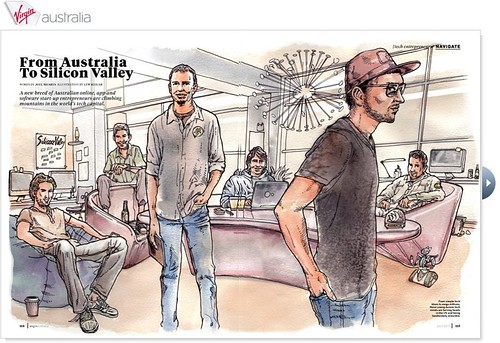Back in the ‘ol days, the first money that went into a technology startup was called “Series A”. This not only marked the first money coming in but also set the valuation not to mention the terms of equity which impacts all other types of investment.
However, those were the days where you had to raise $5-10m to get servers up, which you can now do for $10 with companies like Amazon, Rackspace, and Digital Ocean. It’s a very different world now with the change in cost from marketing to hiring and beyond. During the last half decade, we have also seen an “accelerator” boom and an Angel investor boom where startups can get $20-100k in “seed” financing which accomplishes the same thing as the original Series A but without the traditional terms.
Historically, no top-10 VCs were late-stage-only. Now, two full rounds (Accelerator & Seed) before “A.” Most VCs are now later stage…
— Naval Ravikant (@naval) November 5, 2014
Actually, it’s even crazier than that: entrepreneur friends of mine are raising “seed” rounds now of $1-3m which was what you would raise as Series A. What the hell is going on?
Series Seed
It’s been remarked Series Seed is the new Series A. Why bother calling something an A-round? Well, for one good reason: there’s a valuation. A distinguishing difference between raising seed money and Series A money is you price the equity you are selling verses deferring it. In Silicon Valley, “convertible notes” have become the standard now. You raise the funds from an accelerator or angel investor, but don’t discuss the valuation (as you have no idea about revenues yet which is what you really need for a valuation). The investment is presented as “short-term” debt that converts into equity. The option, which always happens, is that the investor will receive shares instead of the principal based on the agreed terms. Another reason: If you’re raising Series A from VC that means you’ve graduated into a different type of startup. You’re more of a growth business. No longer testing the market but building to scale. For a VC to participate as a Series A, it’s a partnership decision that thinks you can be a billion dollar company and not just an idea. Not more worried about cash in the bank, but that you’ll need enough people to grow quickly (or more commonly, that you can’t grow exponentially without the cash)
“Yesterday’s venture funds are today’s growth equity funds.” – Brooks Zug, HarbourVest #partnerconnect #PrivateEquity
— Sam Sutton (@samjsutton) March 25, 2015
Language matters
I know of a lot of people who are forced to price their seed round. So, if the first money you receive is “seed” and the first priced money you receive is “Series A” then this definition doesn’t work.
That’s why I would define Series A as having two of the three following characteristics:
- Done by a multi-partner venture capital firm, not individuals. Your first real institutional money that also has the potential to lead your Series A round.
- Important to distinguish is this is not an accelerator or a micro-VC (the latter could be $5-25m with one partner, which for all intents and purposes, is a VC fund). These are new breeds of investors that aren’t the traditional, and have very different motivations as well as likely not being able to participate in Series A rounds, let along lead it.
- Done with a price. Your valuation is now defined.
- Done for the purposes of growth, not “startup”
This isn’t just semantics, language matters for millions (of dollars) of reasons. Entrepreneurs ask me on a daily basis how to fundraise and this same advice applies. Understanding these differences could save you from wasting 12 months of your life. Raising seed money is a whole different ball game to raising a Series A, with entrepreneurs not realising this until they have three months of cash left, a payroll, and a lot of users/customers.
My advice is be sure to know the importance of the bar between Series Seed and Series A: vision is 60% of how you raise money with Series A (don’t confuse vision for plans.) Even if you raised $3m seed it doesn’t mean you’re Series A worthy. More cash in the bank doesn’t mean you’re a growth company and you’ll run out of money before you know it, which is the main reason small businesses fail.




